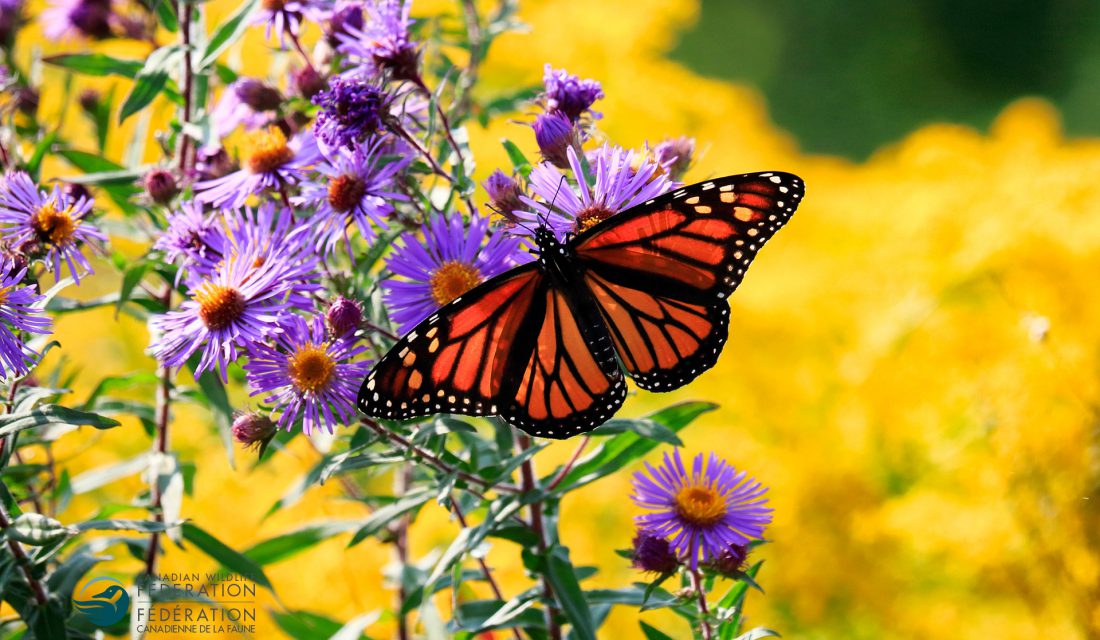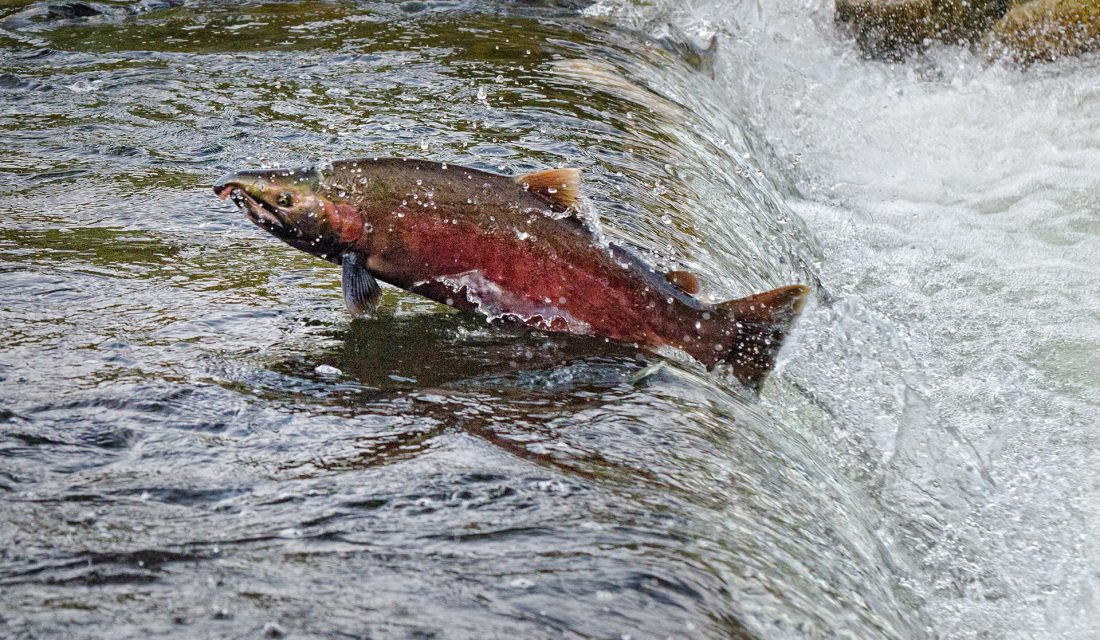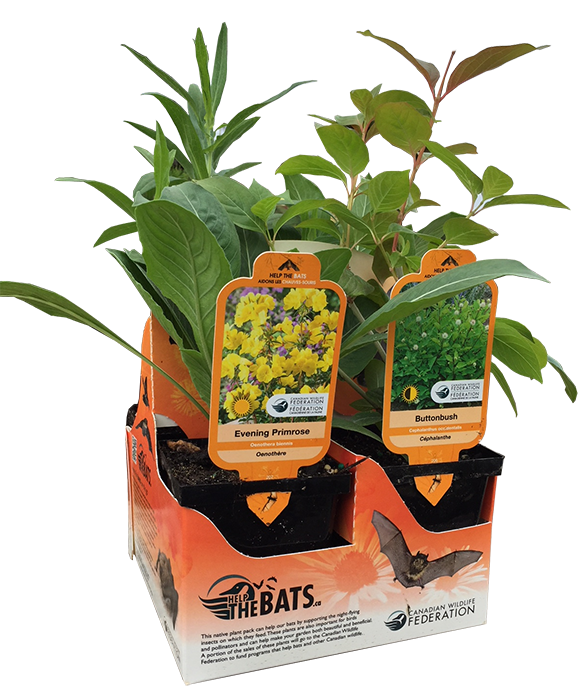The Threat
While people have been using pesticides since 1000 B.C. (using sulphur to combat mushrooms), the most broadly damaging and systemic chemicals have been produced since the 1800s.
DDT was one of the first modern insecticides, initially used to combat insect borne diseases during WWII. Following the war, it became the most popular pesticide used the world over. Unfortunately, this pesticide proved incredibly harmful to the health of a variety of animals, including the Peregrine Falcon, for whom the chemical was linked to thinning egg shells. While DDT was phased out by the mid-1970s, thanks in part to CWF’s advocacy work, its legacy remains. DDT still exists in our lakes and rivers, and it has seeped into marine ecosystems as well. Dolphins, pelicans and sea lions are among the species suffering from this legacy pollutant.
Saying 'No' to Neonics
Neonicotinoids were introduced over 40 years ago because many insects were becoming resistant to common pesticides. Neonics are now the most commonly used pesticides in the world, used on foods like wheat, corn, soy, peas, beans, fruits and vegetables. They are applied as seed coatings, soil solutions, or as sprays on the leaves and stems. But only a small portion of their active ingredients are taken up by the plants they were designed to protect. The remainder is retained in soils and water for periods of months to years.
The widespread use of neonicotinoid pesticides first contaminates the soil of treated crops. When it rains, the residue of these pesticides are carried to waterways, where they become common contaminants of surface waters world-wide. In aquatic habitats they pose risks to invertebrates that were not intentionally targeted for control by the pesticide, and are especially lethal to invertebrate predators such as water bugs and dragonflies. When whole communities of aquatic organisms are disrupted by the reduction of predators, prey species are allowed to grow in numbers at a rapid speed and nutrient cycling – when nutrients move between living things, into the earth and then into the atmosphere - is reduced. Neonicotinoids are less toxic to fish and amphibians, though imidacloprid (a class of neonicotinoid) in particular has been shown to cause damage to fish DNA, which can lead to reproductive and cancerous effects.
Aquatic insect hatch is also very important to aerial insectivores, like birds and bats. Aquatic insect hatch is the moment when insects move from their nymph or pupal stage to their adult stage and pop up to the water’s surface to fly away. Sadly, this too has been affected by neonics. The birds and bats that snatch up aquatic insect hatch to eat are directly impacted through toxic loading (when these harmful chemicals accumulate in their bodies). The widespread use of neonics also means that there are fewer aquatic insects hatching, and that affects the birds and bats that rely on this rich source of food.
Beyond the edges of contaminated aquatic habitats, pesticide residues in water bodies impact terrestrial species as well – namely, the ones that eat insects as the main or sole part of their diets. Loss of insects has been implicated in wide-spread declines of marsh, meadow and shore birds. Neonicotinoids are a plausible factor in grassland and farmland bird declines too, and are responsible overall for millions of bird deaths annually. Bats, too, are directly impacted by a depletion of their insect prey (all Canadian bats are insectivorous), as well as foliar sprays and pesticide residues on the insects they consume.
What CWF is Doing
Urging the Federal Government to Ban Neonics
- The Canadian Wildlife Federation wants Health Canada to re-evaluate the reversal of its decision to phase out the use of these chemicals to now re-allow the use of neonicotinoid insecticides in Canada. We’ve also developed a plan to work with farmers and policy-makers to recover species impacted by neonics including wild bees and other insect pollinators, aquatic insects and species experiencing the indirect effects of neonics due to reduced food ability, such as birds, bats and fish.
CWF supports the development of pest-specific technologies with limited environmental effects. Furthermore, we encourage government to help support farmers in transitioning to neonicotinoid alternatives while ensuring crop yields and quality.
Learn more >
Encouraging Canadians to Use Earth-friendly Gardening Practices
- CWF’s Gardening for Wildlife Program encourages people across Canada to help their local and migratory wildlife by creating wildlife-friendly habitat. The program teaches participants how to garden with wildlife in mind – starting with offering food, water and shelter for the creatures that visit their gardens. It also emphasizes implementing earth-friendly gardening practices in part by avoiding pesticides – like neonics – and opting for natural insect control practices instead. In celebration of their efforts once they have applied the principles to their outdoor space, we encourage Canadians to get their gardens certified as wildlife-friendly by CWF!
Learn more >
Speak Up for Water & Wildlife
This Parliamentary Committee on Fisheries and Oceans will be reconvening soon. We at the Canadian Wildlife Federation believe that the Fisheries Act needs to be more effective on how it protects water and wildlife.
Canada’s wildlife can’t speak for themselves, so it’s up to us to speak up for them. We’re asking you to add your voice today. Let the Parliamentary Committee on Fisheries and Oceans know that you care deeply about our waterways and wildlife.
Already added your voice? You can still help!
Pledge to go pesticide free in your garden.
Check with your garden centre or store before you buy new plants for your garden.
Sometimes pests in small numbers don’t actually do any harm – especially if you have birds and beneficial insects that are happy to eat them. But if you’ve got a particularly troublesome species on your hands, use non-chemical methods of eliminating them like hand picking, using plant barriers or setting insect traps.
About You
Province/Territory




